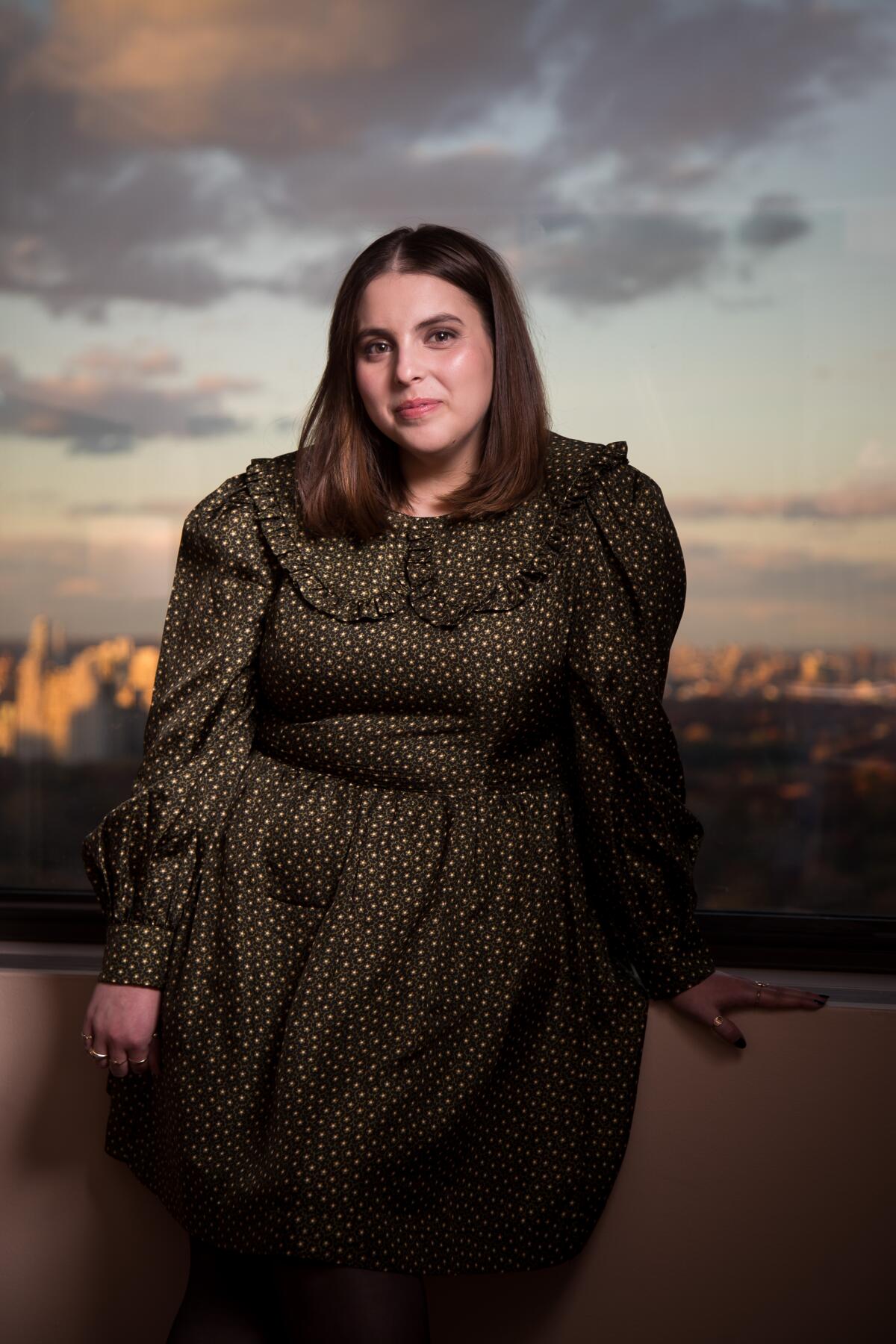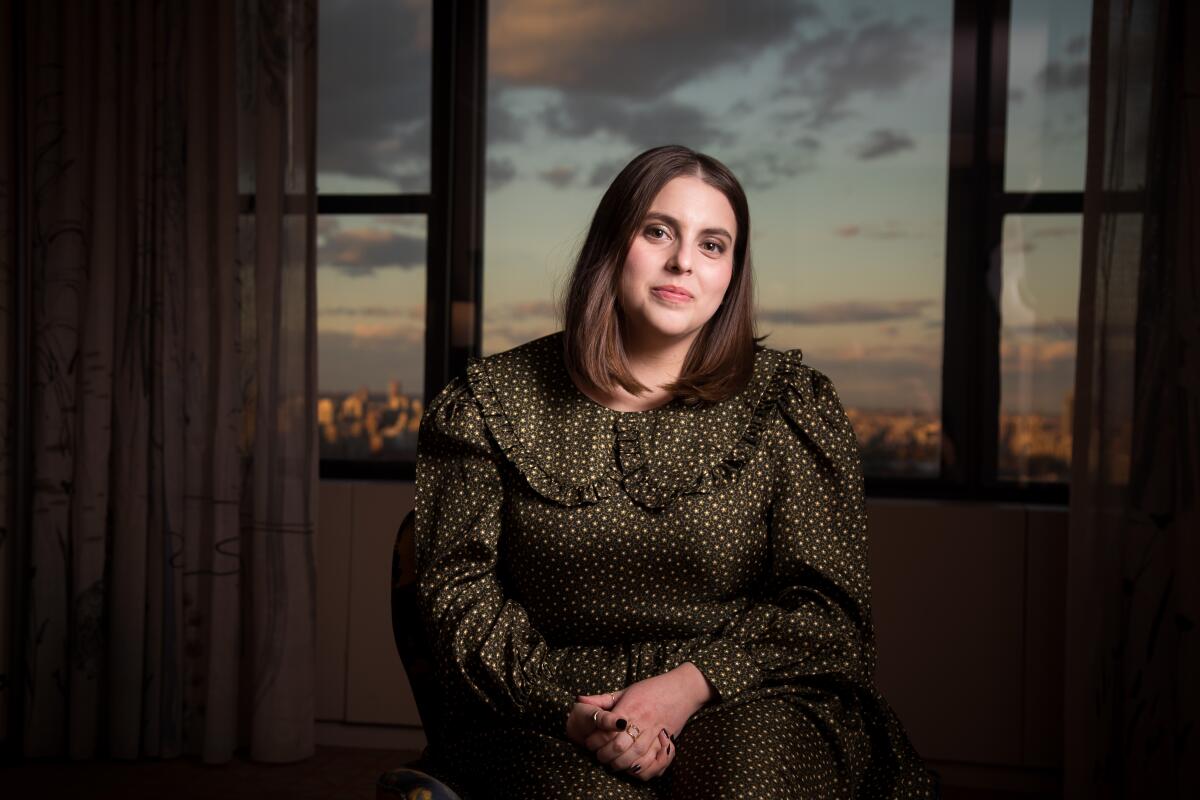How Beanie Feldstein grew up for Monica Lewinsky story ‘Impeachment’

Beanie Feldstein was 4 when Monica Lewinsky suffered untold humiliations at the hands of the Office of the Independent Council, the FBI, President Clinton, his administration and the media. She was 25 when Ryan Murphy called her in 2019 to ask her to star in the third installment of his FX series “Impeachment: American Crime Story” and to be a producer. “June 1, 2019,” Feldstein recalls, speaking by Zoom from New York. “I’ll never forget that date. He opened a door in a new space I’d never entered before.”
Known for her hilarious, endearing turns in the comedies “Booksmart” and “Lady Bird,” Feldstein has never been seen as an adult onscreen before. “Yeah, I’m not standing next to a locker,” she jokes. Further, as she suddenly realized one day on set with Sarah Paulson, who plays Linda Tripp, she had never acted in a drama before. “Paulson said, ‘Ever?’ And I just looked at her like a deer in the headlights for a moment. This was a life-changing experience for me in every capacity.”
She was grateful to have starred in the film “How to Build a Girl,” playing a lightly fictionalized version of a young Caitlin Moran, the author of the book it was based on. “It felt like sort of a steppingstone to this experience, to understand what it’s like to play someone real.” But nothing could quite prepare her to play Lewinsky.
The actor dove into research, relying most devotedly on the authorized biography “Monica’s Story.” “I carried that book in my backpack from the summer of 2019 until we finished shooting.” She met Lewinsky once, briefly, a week before shooting was to begin, but didn’t want to ask too many questions. Lewinsky, also a producer, had already divulged so much. “I just wanted her to know she could trust me,” says Feldstein.
She also listened to the 20 hours of tapes Tripp secretly made of her conversations with Lewinsky before production was set to begin in late March of 2020. When filming was shut down by the pandemic, she had nothing but time, so she went back to the tapes.
A second time?
“Hundreds of times,” she says. “It’s the best and worst gift, because all you ever want when you’re playing the character is to know exactly what they’re thinking and feeling all day, every day. But for me as a human being, and a human being who loves Monica almost as an extension of my own self, it would always make me sick to listen to them.”
The star and her subject share a similar background: “Monica had grown up in L.A. and was Jewish and into theater; I knew those bullet points.” Feldstein also related to the period of time Lewinsky had been in — just out of college and starting her life. “That was where I locked in, that sort of universal feeling of, ‘Who am I as an adult?’” Feldstein says. “No one acknowledged her as a 22-year-old. I mean, she graduated college in June of the year she met Bill; that is a really young person at a unique point in their life.”
Feldstein was shocked — as were many viewers — to learn that members of the FBI and OIC held Lewinsky in a hotel room for almost 12 hours, threatening her with decades in prison if she didn’t cooperate. That encounter took 23 days to shoot. “I am the least Method person you will ever come across,” Feldstein says. But for those days, she didn’t try to take a break or lighten her mood between takes. “It was really important to me to get the depth of her pain as authentic as possible, because it is what was so lacking in the portrayal of her at the time.”
Shooting 28 pages about the grand jury proceedings in three days was initially nerve-racking — that was a marathon — but then morphed into something else entirely. “Those actors who played the jury have my heart and soul, they are remarkable human beings and remarkable actors,” Feldstein says earnestly. “It ended up being some of my favorite days on the whole shoot. Monica starts off feeling so vulnerable and feeling like they despise her and want to shame her and every word out of her mouth is wrong. And all of them go on this journey of loving her and wishing her the best and hating what happened to her by the end.”

While holding President Clinton to account for his behavior, the show does not let Lewinsky off the hook. “That’s where Monica came in. She was so often saying, ‘Let’s put this in, we can’t give me a hall pass.’ She was presented as so one-note at the time. We wanted a truly complex portrait of a human being.”
Tripp, as assayed by Paulson, has equal depth. “Every facet of her being was committed to playing Linda in the most authentic human way possible, in whatever way that meant,” Feldstein says of her co-star. “It was so thrilling. The little nerd in me was like, I’m watching Sarah Paulson create this right now.” As for Clive Owen as Clinton, she notes that after their first scene together, “I felt like I had just played tennis at Wimbledon. Like, how am I allowed to rally with this level of acting?”
Feldstein can now be seen in the film “The Humans,” which opened last month, and in the spring she‘ll star in “Funny Girl’s” first Broadway revival since its Barbra Streisand-led debut. But she hasn’t yet let go of her experience on “Impeachment” and doesn’t think she ever will. “It’ll be stuck in my heart forever.”
More to Read
From the Oscars to the Emmys.
Get the Envelope newsletter for exclusive awards season coverage, behind-the-scenes stories from the Envelope podcast and columnist Glenn Whipp’s must-read analysis.
You may occasionally receive promotional content from the Los Angeles Times.










